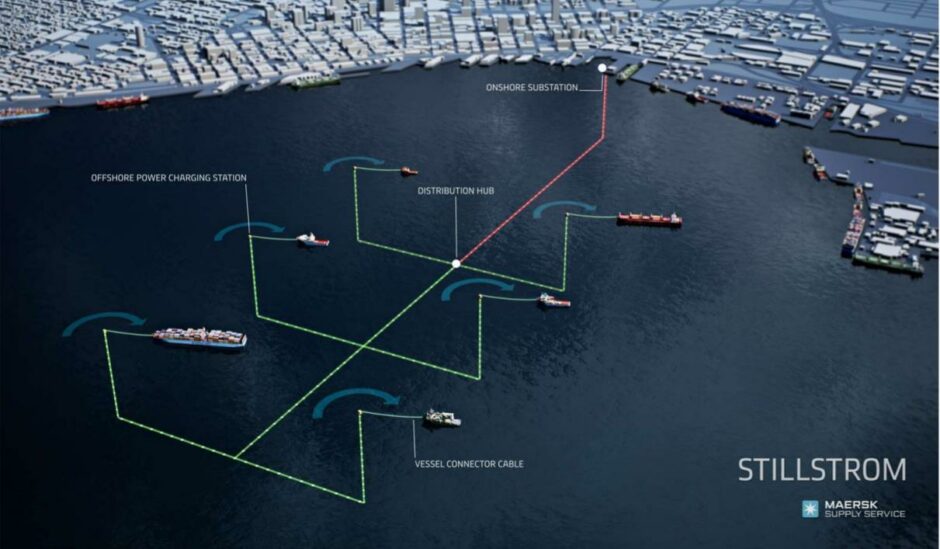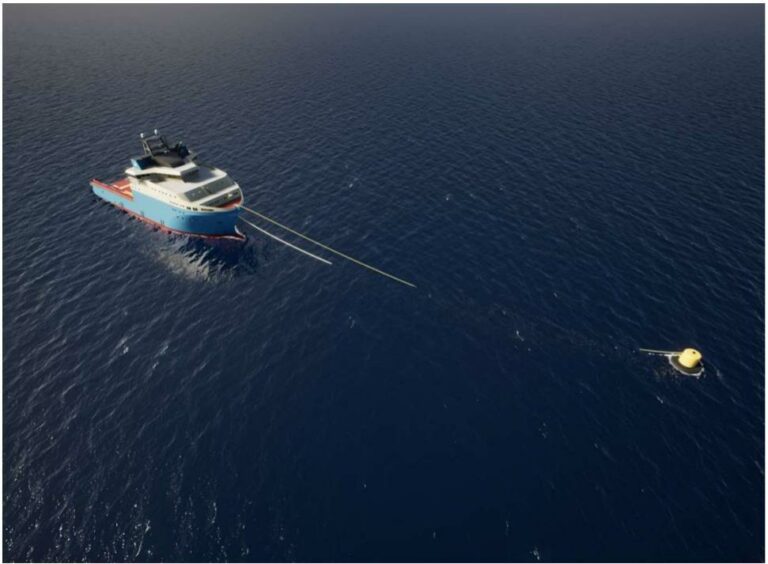
A “pioneering new company” has been launched in order to deliver offshore electric charging solutions to vessels.
Stillstrom has been created by Maersk Supply Service, part of Danish shipping company A.P. Moller-Maersk, to support the decarbonisation of the maritime industry.
Together with renewables giant Orsted, it will demonstrate the world’s first full-scale offshore charging station for vessels at an offshore wind farm.
Scheduled for installation later this year, the solution will eliminate idle emissions, reducing the sector’s environmental footprint.
Offshore electric charging solutions will also be delivered at ports and offshore energy hubs.
Stillstrom, which means ‘quiet power’ in Danish, will be the first to market offshore charging, to ports and energy hubs.

By allowing vessels to power up while safely moored to a charging buoy, owners can begin to phase out fossil fuels from the maritime industry.
Steen Karstensen, chief executive of Maersk Supply Service, said: “Stillstrom is part of our commitment to solving the energy challenges of tomorrow.
“By investing in this ocean cleantech space at an early stage, we can help lead the green transition of the maritime industry.
“Stillstrom has been developed within Maersk Supply Service and the timing is right to create a venture that will be focused on delivering offshore charging solutions.”

As previously announced, the first full-scale charging buoy will be demonstrated with offshore wind giant Orsted later this year.
It will supply overnight power to one of the company’s service operations vessels (SOV), supporting Orsted’s aim to be climate-neutral by 2025.
Any learnings gained during the design of the buoy’s integration into the offshore wind asset will be shared in order to maximise its uptake.
In the future the same solution will be scaled and adapted to supply power to larger vessels, enabling ships of all sizes to charge when lying idle.
Sebastian Klasterer Toft, venture program manager at Maersk Supply Service, said: “Our vision at Stillstrom is to enable maritime decarbonisation, by providing the infrastructure that will allow vessels to charge from clean energy when idle offshore.
“The mission is to remove 5.5 million tons of CO2 within five years of commercial rollout, additionally eliminating particulate matter, NOx, and Sox.”
Recommended for you

